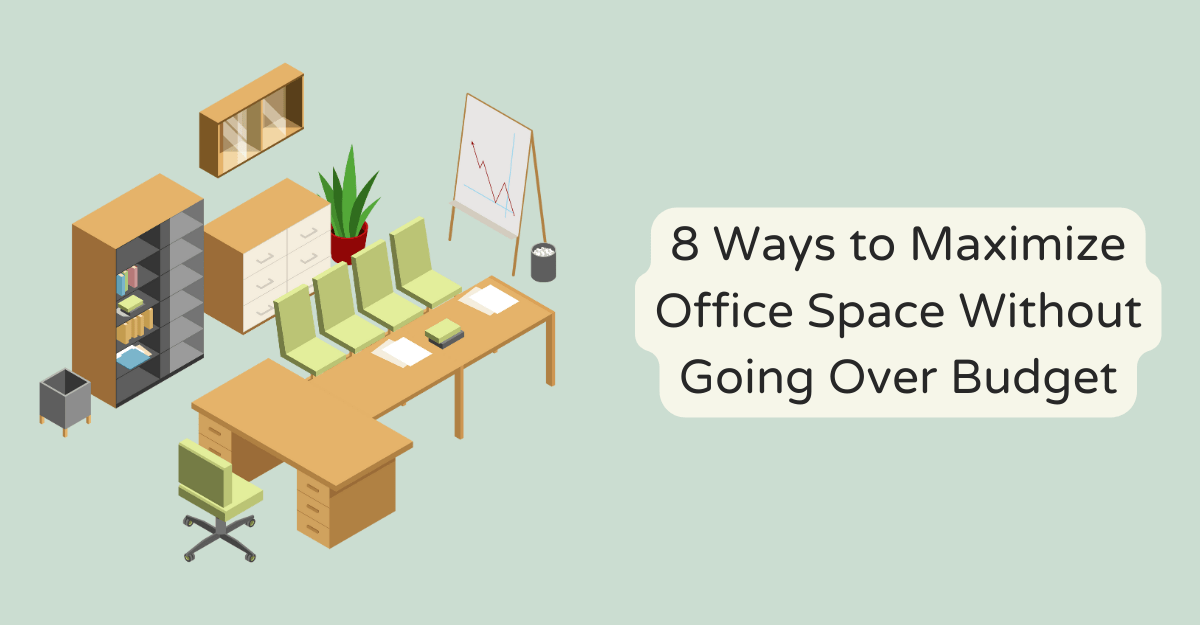
Maximizing office space is not just about squeezing every inch out of your square footage—it’s about creating an environment that fosters productivity, creativity, and comfort for employees while ensuring cost-effectiveness for employers.
A well-organized workspace can enhance concentration, facilitate collaboration, and even contribute to the overall well-being of the team. On the other hand, for employers, efficient space utilization can lead to significant savings in real estate costs, which are often a major overhead expense. The challenge, however, lies in achieving this balance without going over budget.
This article dives into practical, innovative strategies to maximize your office space efficiently and cost-effectively.
Conduct a Thorough Space Audit
The first step toward optimizing your office space is understanding what you’re working with. Conducting a thorough audit involves assessing how much space you have, how you’re currently using it, and identifying areas that are underutilized or overcrowded. This process can uncover surprising insights, such as finding out that large meeting rooms often sit empty, or that there’s an excess of unused storage space taking up valuable real estate. By getting a clear picture of your space utilization, you can make informed decisions on how to rearrange, declutter, or repurpose areas to better meet your needs.
Invest in Multipurpose Furniture
Furniture that serves dual purposes can be a game-changer in space optimization. Desks with built-in storage, foldable tables, and modular seating can transform and adapt to different needs without occupying extra space. These pieces are particularly valuable in smaller offices where flexibility and efficiency are paramount. Investing in quality, multipurpose furniture allows for a more versatile office layout that can easily adjust to changing work scenarios, from individual tasks to group meetings, without the need for additional items that clutter the space.
Moreover, we recommend working with office furniture installation experts as it can streamline the task, ensuring a job well done.
Embrace Flexible Work Arrangements
The traditional 9-5 office setup is gradually giving way to more flexible work arrangements, and this shift can be leveraged to maximize office space. By adopting models like hot-desking, where employees do not have fixed desks but use any available workstation, companies can significantly reduce their space requirements. This approach not only supports a mobile workforce but also encourages a dynamic and collaborative environment. Additionally, encouraging remote work, even if only for part of the week, can further reduce the need for physical space, leading to potential savings on rent and utilities.
Go Paperless
Creating a paperless office is not just an environmental statement; it’s a strategic move towards freeing up physical space. Transitioning to digital documents and cloud storage solutions can significantly reduce the need for file cabinets, storage rooms, and even large desks to accommodate paperwork. This shift not only makes your office appear more spacious but also enhances operational efficiency. Employees can access documents quickly and collaborate in real-time, regardless of their physical location. Going paperless is a forward-thinking strategy that aligns with modern work practices and sustainability goals.
Optimize Lighting and Color
Optimizing your office space is also about harnessing the power of lighting and color to create an environment that feels spacious and inviting. Natural light can transform a cramped office into a vibrant, energetic space, so position workstations near windows whenever possible. Complement natural light with well-placed artificial lighting to brighten up darker corners and make the entire office feel more open and welcoming. When it comes to colors, choose light, reflective shades for walls and furnishings. Soft whites, pale blues, and gentle greens can make spaces appear larger by reflecting light and giving an airy feel to the office. This visual trick not only enhances the perception of space but also boosts the mood and productivity of your team.
Implement Smart Storage Solutions
In the quest to maximize office space, smart storage solutions are your best ally. The right storage can significantly reduce clutter and free up valuable floor space. Consider innovative options like mobile storage units, which provide the flexibility to move resources as needed, or under-desk storage to keep personal items discreetly tucked away.
Utilizing vertical space with wall-mounted shelves can transform unused areas into effective storage solutions, ensuring that every inch of your office serves a purpose. By implementing these smart storage strategies, you create a more organized, efficient workspace that accommodates all your storage needs without compromising on space.
Encourage Clean Desk Policies
A clean desk policy is more than just an office rule; it’s a commitment to maintaining a clutter-free and productive workspace. Encouraging employees to keep their desks tidy and free of unnecessary items can have a significant impact on the overall feel of the office. This approach not only helps in maximizing physical space but also in reducing visual clutter, which can distract and hinder productivity. Regularly clearing desks of old papers, unused stationery, and personal items can make the office feel more spacious and organized, fostering an environment where focus and efficiency thrive.
Regularly Reassess and Adapt
An office space evolves with the changing needs of your business and workforce. Regular reassessment and adaptation of your office layout and policies ensure that your space remains efficient and conducive to productivity. As your team grows or the nature of your work changes, so should your office. This could mean reconfiguring the layout to better support collaboration, updating furniture to accommodate new technology, or introducing more flexible workspaces to suit a hybrid workforce. Being proactive in reassessing and adapting your office space ensures that it continues to meet the needs of your employees while maximizing space and resources.
Conclusion
Creating an optimized office environment that supports productivity, fosters employee satisfaction, and maximizes space efficiency is a multifaceted challenge, especially when working within a budget. However, by embracing strategies such as optimizing lighting and color, implementing smart storage solutions, encouraging clean desk policies, and regularly reassessing your space, you can create a workspace that not only meets but exceeds expectations.
These approaches provide a roadmap for businesses to transform their offices into dynamic, efficient spaces that adapt to the evolving needs of their workforce. The key is to remain flexible and innovative, always looking for ways to improve and optimize. With thoughtful planning and strategic implementation, maximizing your office space becomes not just a goal, but an ongoing process that contributes to the success and growth of your business.

